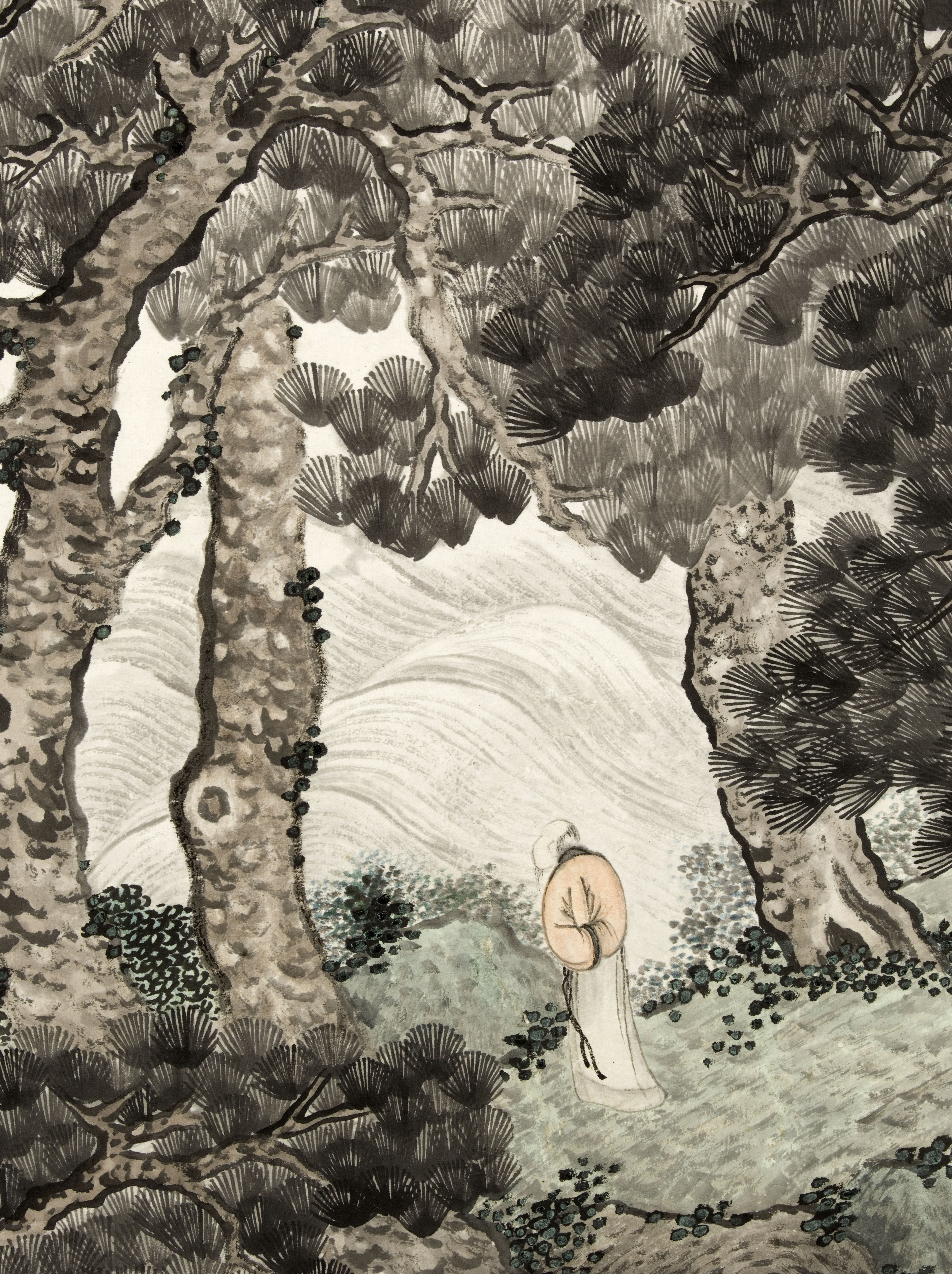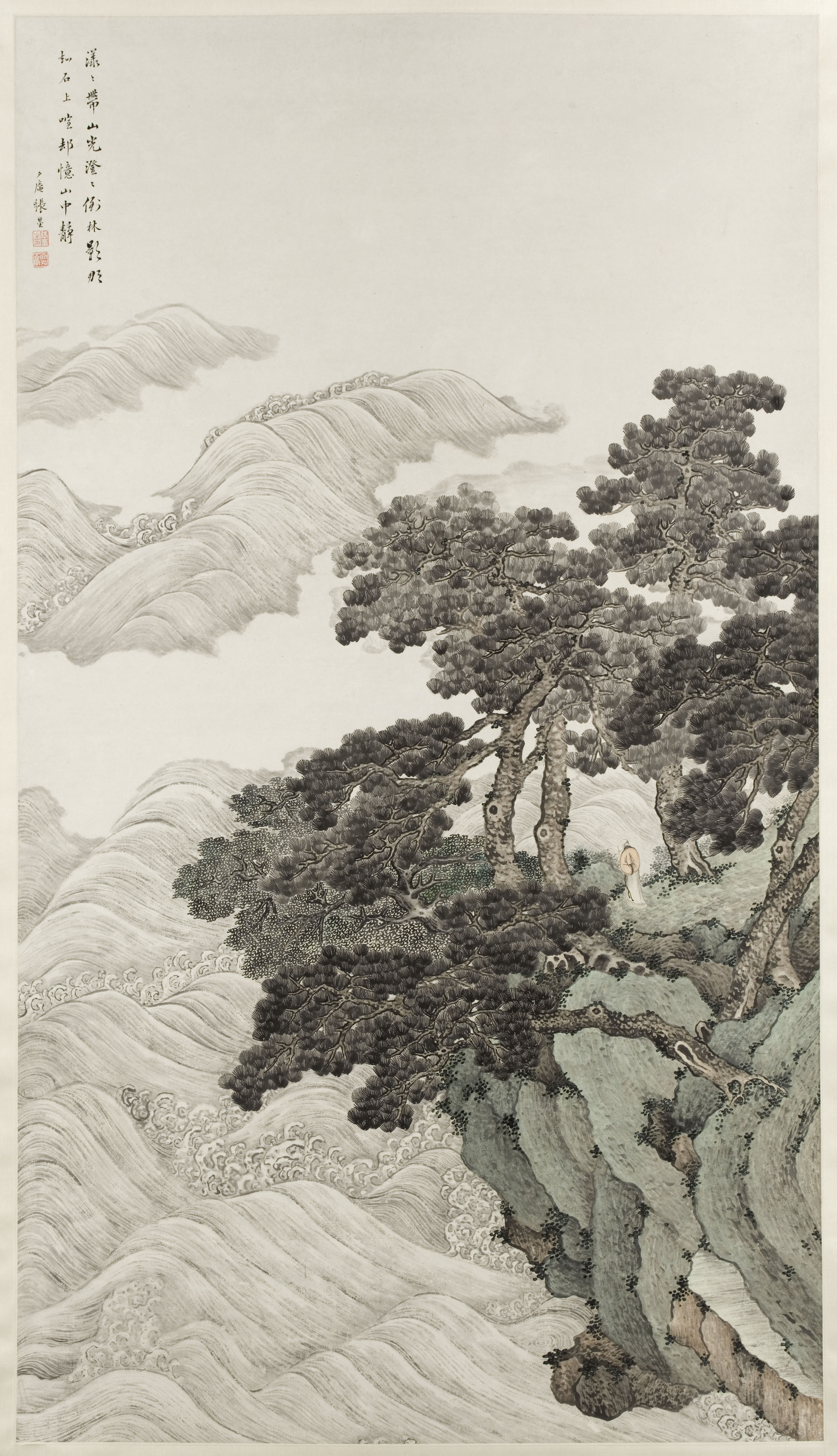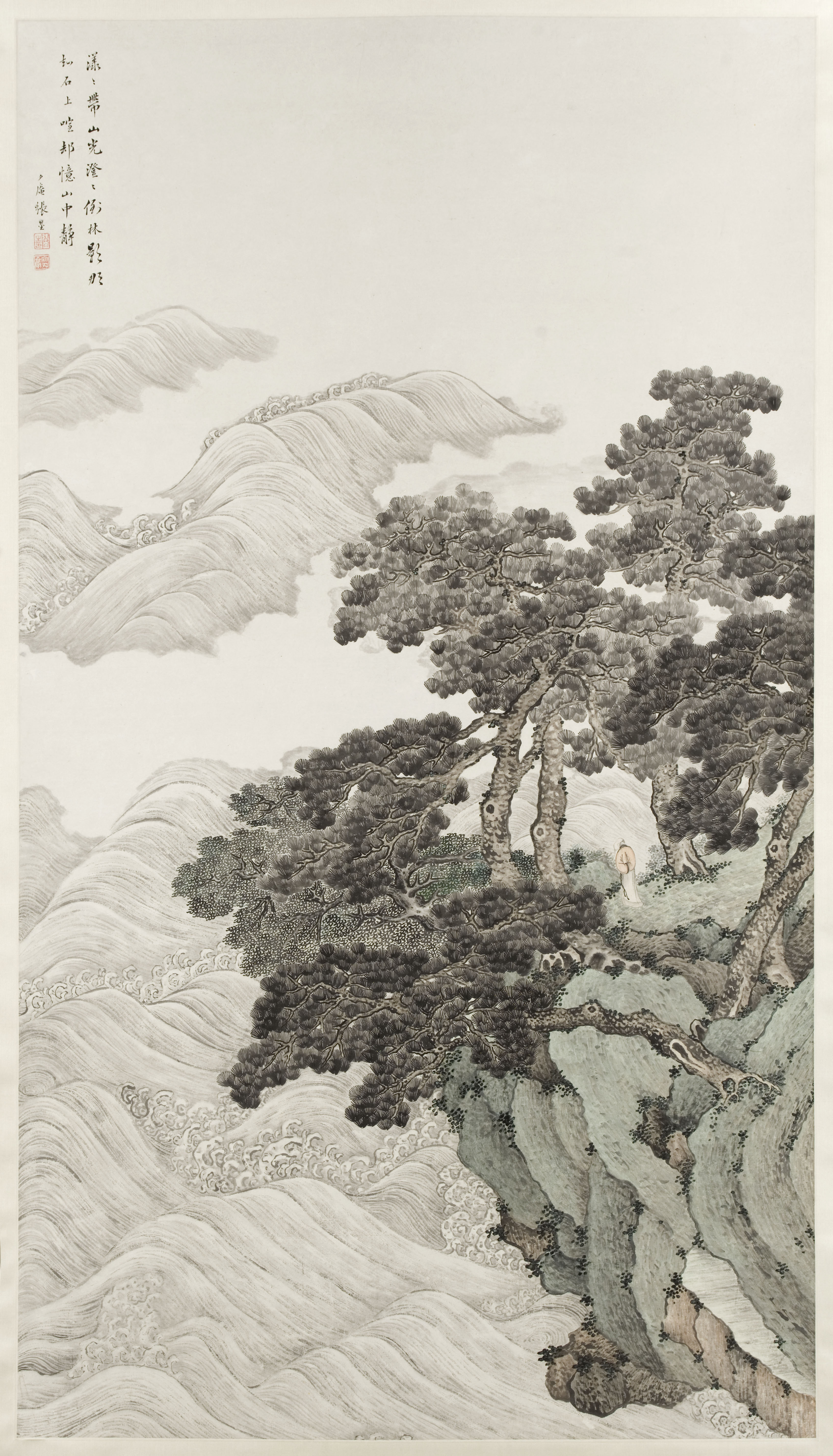
Solitaire sous les pins contemplant les vagues
Papier, Encre, Couleurs - Pigments
Peinture
En haut à gauche, poème de Huang Fuzeng 皇甫曾, signature de l'artiste suivie de deux sceaux; 夕菴張崟; 張崟之印; 寶巌氏
Don manuel : Société des Amis du musée Cernuschi
M.C. 2008-17
Inscription:
In its ebb and flow, it carries the colours of the mountain,
In its clearness, it reflects the shadow of the forest.
The sound of its impact on the rock
Brings to mind the calm [that reigns] in the mountains.
Xi An [courtesy name of the painter] Zhang Yin. Zhang Yin came from a family of wealthy merchants from Zhenjiang, Jiangsu. His father and uncle were very prominent patrons. Among the personalities entertained by his father, the calligrapher and collector Wang Wenzhi and the painter Pan Gongshou (1741-1794) had a profound influence on Zhang Yin. Pan Gongshou appears to have introduced him to the work of Wen Zhengming, who inspired much of his work in his youth. When he was in his fifties, the flooding of the Yangtze River ruined Zhang Yin, who had to leave his former home and move to the city, where he became an artist painter by trade. His final years, spent in poverty, were extremely creative. In his large-format compositions, Zhang Yin endeavoured to capture the monumental character of the Northern Song landscape painters. His powerful polychrome works established him as the leader of the Zhenjiang school.
The format and tonalities of the landscape painting Solitary Person under Pines Watching the Waves are those of this final period. The ink work on the rocks on the show the influence of the Northern Song models. The fan-shaped needles of the great pines, whose intense shading suggests depth in the foliage, are characteristic of Zhang Yin’s style. The composition has close similarities with other paintings executed in the early 1820s, such as Contemplation of a Waterfall in Autumn in the Shanghai Museum. In the Cernuschi Museum painting, Zhang Yin substituted mountainous peaks with rolling waves.
The subject is an original interpretation of a theme that was often explored by the artist, the contemplation of a waterfall. The inscription, borrowed from a Tang-era poet, Huang Fuzeng (721 ?-785 ?), describes a mountain river. The poet describes the contrast between the fury of the torrent and the serenity that reigns on the peaks. The fact that the painter deliberately omitted the title of the poem The Spring at the Foot of the Mountain suggests that he perhaps intended to portray a roaring river rather than a mountain landscape. Given how prominently the famous sites of Zhenjiang feature in his work, Zhang Yin may have been inspired by the landscapes around the Great River.

